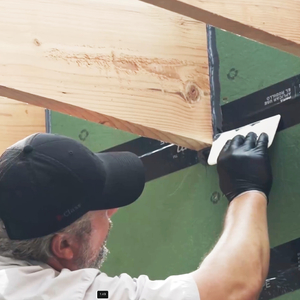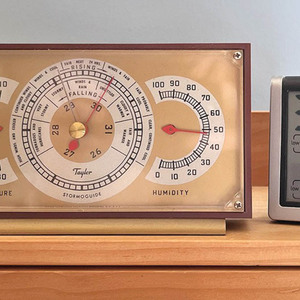My son and I rebuilt a small house and called for a final insp this week. When the inspector plugged in his plug checker into an outside GFCI plug it tripped but wouldn’t re-set. Turns out thet outside plug is the last plug of the beadroom circuit (AFCI breaker.) The GFCI test tripped the AFCI breaker. Inspector says the outside plug needs to be on another circuit. OK by me except we’ll have to run conduit on the outside because of no attic access.
Call the electrician and he says it’s OK on the bedroon circuit. He asks an inspector friend in the next city over and he says there is nothing in the code that says a GFCI plug can’t be the last plug in a AFCI circuit.
Opinions? Obviously I will make the inspector happy if he insists. But I think it’s OK as is and I’ll see if I can change his mind (politely).
Jim


















Replies
That outside outlet will not be too useful as is. It will be tripping the arc fault breaker way too much.
One of my wories
That is what I am worried about. Except, we have had the chop saw plugged into it many times without a problem. I figure a cheap brush motor would trip it if anything but so far, so good.
I'll see what the Inspector says tomorrow.
I can't see why it would be prohibited.
AFAIK, it's not against code to have a GFCI downstream of another GFCI or AFCI.
Generally not a good idea to have outside outlets on a interior lighting circuit, though, since outside outlets are subject to nuisance trips.
I talked to the inspector again and he OK'd it. It should be on a separate circuit but a lot of work to fix it.
Jim
>>>I talked to the inspector
>>>I talked to the inspector again and he OK'd it. It should be on a separate circuit but a lot of work to fix it.
Yah, around here it would need to be that way. Nice of him to make an exception.
You must be an good client to deal with. Too many people get their panties in a knot over this sort of thing, and inspectors have no recourse but to call it a deficiency (which technically it is).
Glad it worked out.
This thread reminded me of an FYI that I learned from my inspector:
Our residential code says that there must be one outside GFI outlet on it's own circuit. Once that requirement is met, there is nothing untoward about putting all kinds of other outside GFI outlets on shared circuits.
I wanted lots of outlets outside, but didn't want to make a separate homerun for each one. Turned out I didn't need to once the first one was installed.
GFCI - AFCI interaction
There's nothing in the NEC that prohibits (or advises against) having a GFCI recept on an AFCI-protected branch circuit.
The self-test function on a GFCI receptacle may caouse an AFCI breaker to trip. Why? Well, AFCI breakers will open under four conditions to protect the branch circuit wiring (conditions 1-3), or the connected load (condition 4):
1. overload, like a regular breaker;
2. short circuit (hot-neutral fault), again, like a regular breaker;
3. arc fault (older AFCI breakers detected and trippped under certain parallel arc faults; newer ones cover both series and parallel arc faults); and,
4. ground fault, at 30 mA. This is called GFPE or ground fault for protection of equipment.
A GFCI receptacle or breaker protects against ground fault for protection of personnel, and trips at 6 mA. A GFCI breaker also trips on overload or short circuit.
So--if there's a GFI receptacle on a branch circuit protected by an AFCI breaker, the AFCI breaker will trip when the GFI recept is tested with the self-test button. Why? The self-test button on a GFI recept typically drops a 1 k ohm resistor across hot and neutral. One thousand ohms across 120V gives you about 120 mA of current, plenty to trip both the GFI and the AFCI.
In normal operation, a ground fault in any load plugged into the GFI recept should trip the recept before the AFCI breaker trips, because the GFI recept trip current is about one-fifth of the AFCI breaker GFPE trip current.
Is that clear as mud? Good...
Here's a nice AFCI troubleshooting flowchart from the Natl. Electrical Manufacturer's Assn, NEMA:
http://www.afcisafety.org/files/White%20Paper5.pdf
Cliff
p.s. Most people are unaware that GFCI recept self-test button is only a gross verification that the GFI sensor and relay are working. To confirm the GFI sensitivity (trip current) and time-to-trip, you need a special tester. Ideal Indistries makes the Sure-Test, and Tasco makes the Inspector II and III, all of which measure trip current and time. I've found a lot of old (like 20-year old) or abused (with damp conditions, or high starting current loads) GFCI receptacles that self-test OK, but that pass either too much current or 6 mA of current for a long time. CP